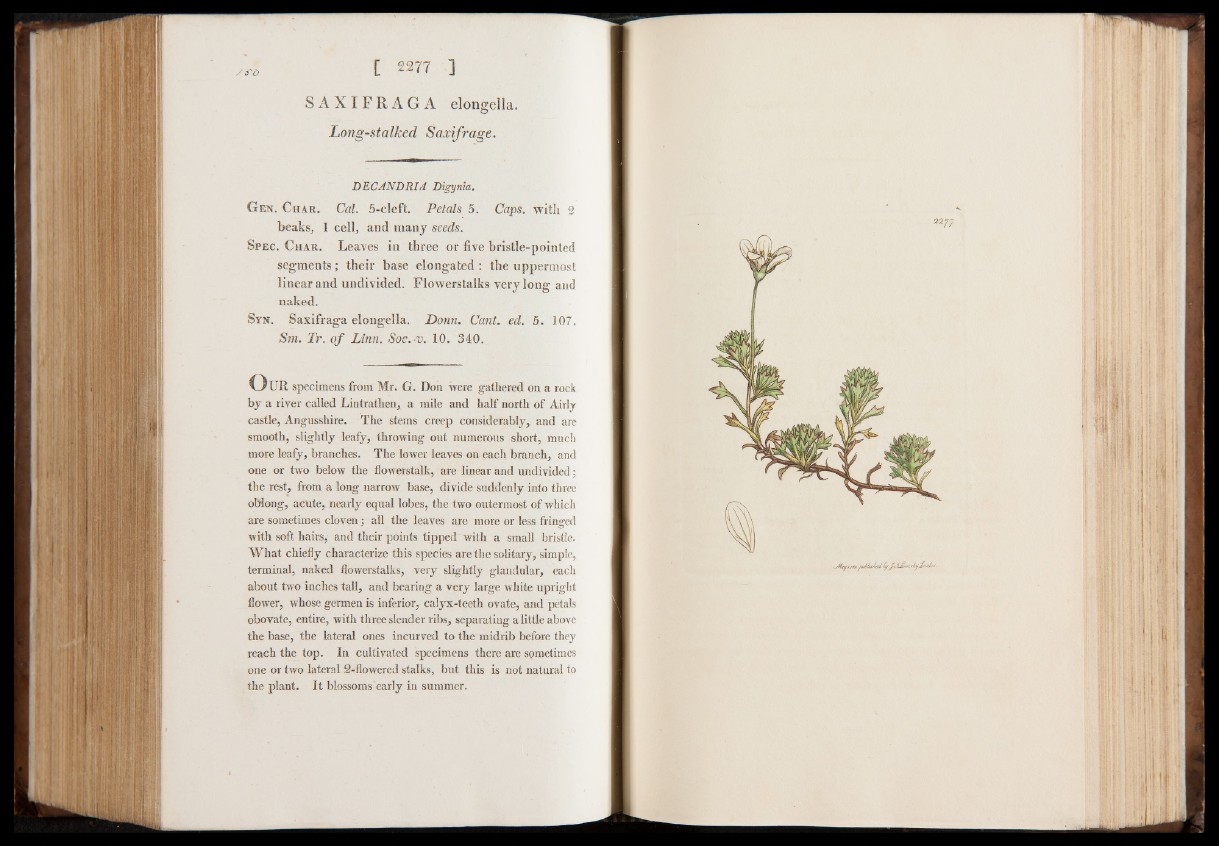
S A X I F R A G A elongella.
Long-stalked Saxifrage.
DECANDRIA Digynia.
Gen. Char. Cal. 5-cleft. Petals 5. Caps, with 2
beaks, 1 cell, and many seeds.
Spec. Char. L e a v e s in three o r five bristle-pointed
s e gm en t s ; th e ir base e lon g a ted : the uppermost
lin e a r and und iv id ed . F low e r s ta lk s v e ry lo n g and
naked.
S yn. Saxifraga elongella. Dorm. Cant. ed. 5. 107.
Sm. Tr. o f Linn. Soc.-v. 10. 340.
O u r specimens from Mr. G. Don were gathered on a rock
by a river called Lintratlien, a mile and half north of Airly
castle, Angusshire. The stems creep considerably, and are
smooth, slightly leafy, throwing out numerous short, much
more leafy, branches. The lower leaves on each branch, and
one or two below the flowerstalk, are linear and undivided;
the rest, from a long narrow base, divide suddenly into three
oMong, acute, nearly equal lobes, the two outermost of which
are sometimes cloven; all the leaves are more or less fringed
with soft hairs, and their points tipped with a small bristle.
W h a t chiefly characterize this species are the solitary, simple,
terminal, naked flowerstalks, very slightly glandular, each
about two inches tall, and bearing' a very large white upright
flower, whose germen is inferior, calyx-teeth ovate, and petals
obovate, entire, with three slender ribs, separating a little above
the base, the lateral ones incurved to the midrib before they
reach the top. In cultivated specimens there are spmetimes
one or two lateral 2-flowered stalks, but this is not natural to
the plant. I t blossoms early in summer.